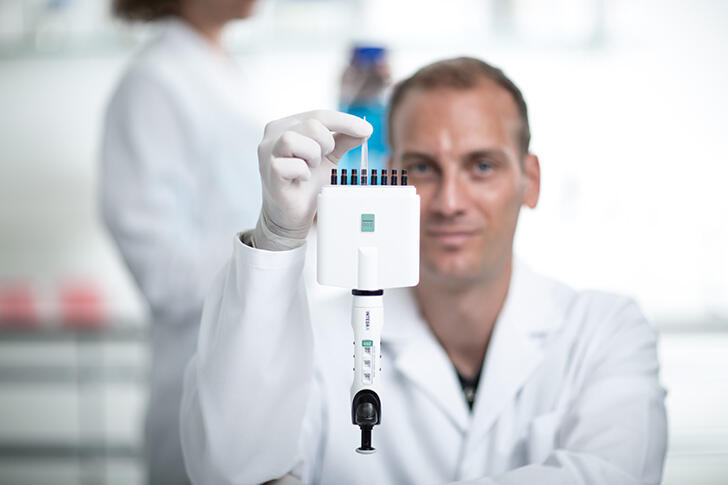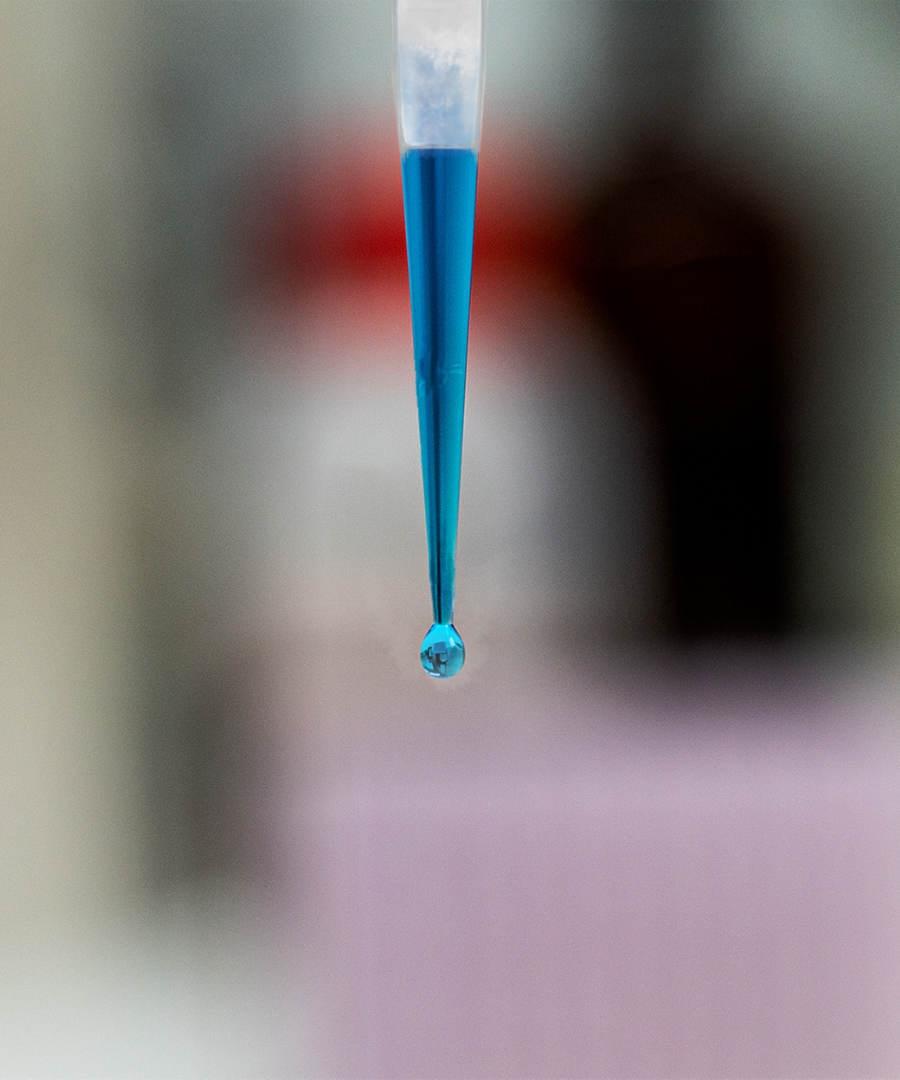8 common pipetting errors – and simple solutions to address them
The impact of pipetting errors is often underestimated, but even slight discrepancies at the bench can accumulate to form vast inaccuracies in your data. The number of variables at play rises with the number of manual pipetting steps being performed, increasing the chance of erroneous practices seeping into your workflows. Understanding these sources of error is essential for improving your pipetting accuracy, and combining good pipetting practices with precise pipettes – such as those supplied by us – will ultimately help to boost the reliability of your results. Here, we look at the 8 most common pipetting mistakes, as well as some simple solutions to overcome them.
Pipetting error 1: ignoring temperature fluctuations
Temperature variations between pipettes, tips and liquids can affect the volume of the air cushion inside the pipette, leading to volume variations and, ultimately, inconsistent measurements. Incorporating a prewetting step into your pipetting routine helps to ensure that all labware and liquids are in equilibrium, largely overcoming this issue and translating into more confidence in the accuracy of your measurements.
All of our electronic pipettes can be programmed to include a prewetting step, making it easier to achieve precise and consistent results. Additionally, you should always visually inspect pipetting volumes to confirm their accuracy.
Pipetting error 2: inconsistent pipetting angle
Pipetting technique is a subtle art that is mastered over years of practice. Holding a pipette at a consistent angle is paramount; it is essential to ensure it does not deviate beyond 20 degrees to minimize inconsistencies that affect the reliability of your results. The next time you are at the bench, remember: the greater the angle, the larger the error.
By adopting ergonomic tools such as our handheld EVOLVE, VIAFLO or VOYAGER adjustable tip spacing pipettes, you can maintain precise pipetting with ease and comfort. These pipettes are lightweight and easy to use, while the VOYAGER allows you to transfer samples between labware of different formats, reducing the number of steps – and the chance of errors creeping into your workflow. Alternatively, the ASSIST PLUS pipetting robot, MINI 96 portable electronic pipette, and VIAFLO 96 and VIAFLO 384 platforms are designed to improve consistency by ensuring pipette tips are vertically positioned every time.
Pipetting error 3: inconsistent manual pipetting practices
When using a manual pipette, a number of variations may arise – including discrepancies in the pipetting angle or speed, volume adjustment and plunger depth depression – which can lead to inconsistencies in your results.
Our EVOLVE manual pipettes – with their minimal plunger force, lightweight design and rapid volume adjustment – can significantly enhance the precision and accuracy of your pipetting.
Pipetting error 4: improperly fitting tips
It is essential to use appropriate tips when pipetting, ideally from the same manufacturer as the pipette – not a universal tip supplier – to avoid dripping or leaking, and to prevent the tips being misaligned or falling off. Poorly fitting tips can quickly lead to inaccurate liquid volumes with each aspiration.
Our GRIPTIPS® pipette tips are designed to fit our range of pipettes without fail, guaranteeing that they never fall off and form a perfect seal every time, ensuring there is no leaking or dripping.

Pipetting error 5: incorrect volume range
Each pipette has an optimal volume range, which is typically 35-100 % of the nominal volume for an air displacement pipette. Operating below this range results in too much air in the cushion, which can lead to inaccurate results. This means that staying within this range is crucial to ensure the pipette operates at its best, minimize errors and maintain the best possible accuracy.
Our VOYAGER pipettes, VIAFLO electronic pipettes and EVOLVE manual pipettes offer a wide range of volumes, making them suitable to just about any application.
Pipetting error 6: disregarding liquid viscosity
Viscous liquids demand special handling due to their thickness, requiring precise pipetting speed and control to ensure accurate liquid transfer.
This challenge can be addressed with our electronic pipettes that offer adjustable speeds and a ‘reverse pipette’ mode, which enables controlled and accurate transfers of viscous substances. You might also benefit from keeping the pipette tip in the liquid for longer when aspirating – so the tip can settle in the liquid – while wide bore or low retention tips can help with the smooth transfer of samples for maximum liquid recovery.
Pipetting error 7: ignoring the volatility of a sample
Rapid evaporation of volatile liquids presents a major challenge to lab technicians, as it can significantly alter your pipetting volume. To prevent this from happening, a swift workflow is required, and liquids must be rapidly dispensed to maintain the accuracy of your measurements.

Our electronic pipettes feature ‘rapid dispense’ and ‘reverse pipette’ capabilities to minimize your time at the bench, ensuring accurate volume transfer before evaporation occurs. Additionally, a prewetting step can easily be programmed on our electronic pipettes, which helps to equilibrate air pressure and humidity in the tip, reducing evaporation.
More information about pipetting viscous and volatile liquids
Pipetting error 8: not discarding the first and last dispenses when repeat dispensing
Following aspiration, the mechanical parts inside an electronic pipette need to change direction before dispensing. When performing repeat dispenses, this can result in the first dispense being too low in volume, and the final dispense ultimately including the accumulated error of all previous dispenses. Discarding the first and last dispense helps to eliminate inconsistencies that can arise due to variations in initial dispensing pressure or residual liquid in the tip. This practice ensures that your data is based on the most reliable aliquots.
The 'repeat dispense’ mode on our VIAFLO and VOYAGER pipettes is a real game changer, allowing you to aspirate once and dispense multiple small aliquots, saving time and greatly minimizing user error. This intuitive setting also lets you program pre- and post-dispense steps into your pipetting workflows.
Of course, there are more considerations beyond the 8 discussed here, because the art – or science – of pipetting could be explored in many chapters of a book. In the meantime, you might also want to consider the following points to optimize your pipetting strategy:
- Clean your pipette regularly
- Take frequent breaks
- Calibrate your pipette regularly
- Store your pipette vertically, preferably in specialized stands























